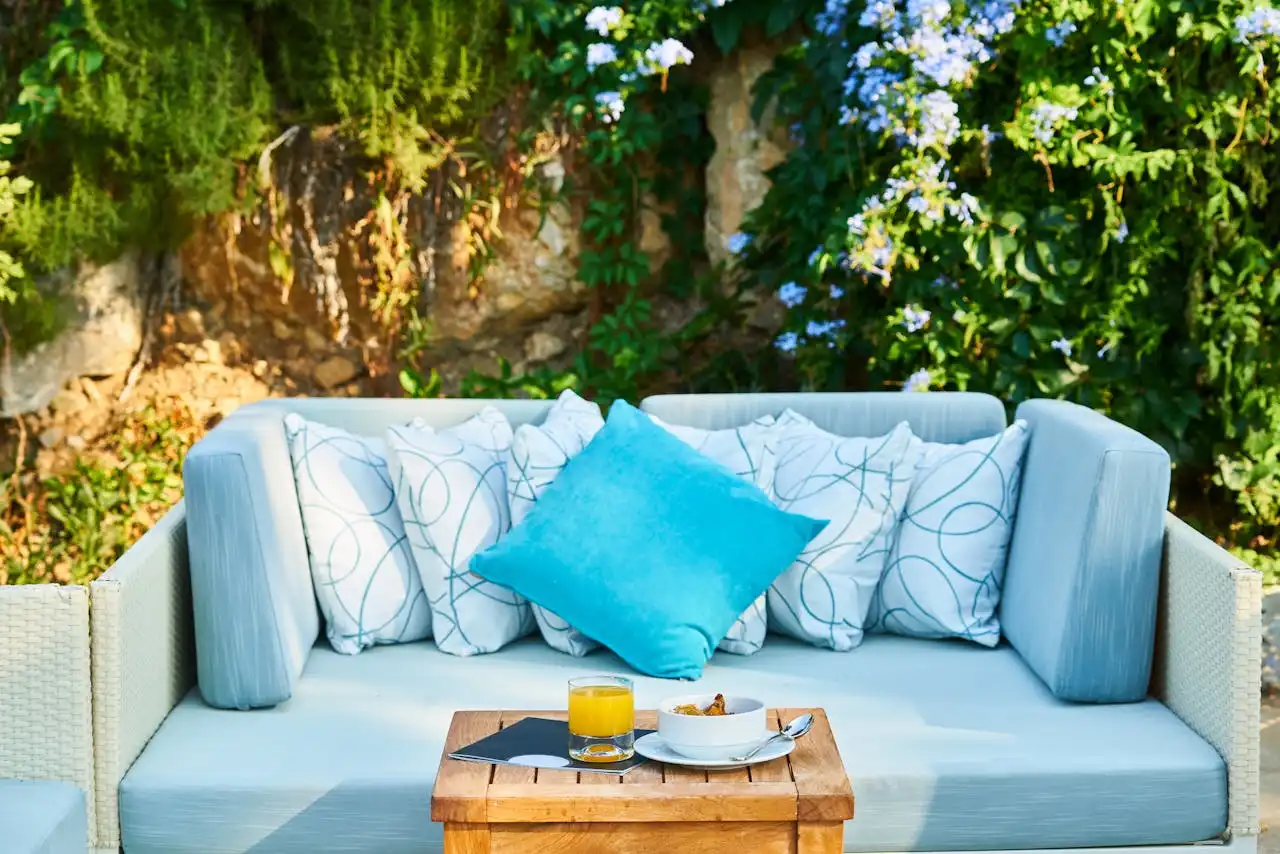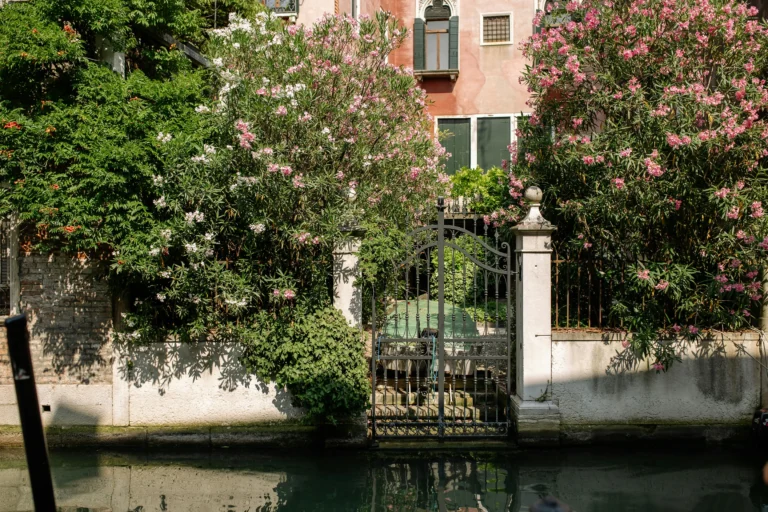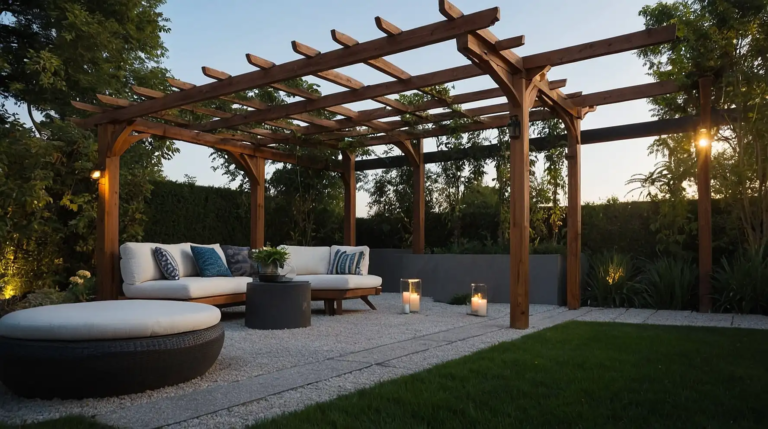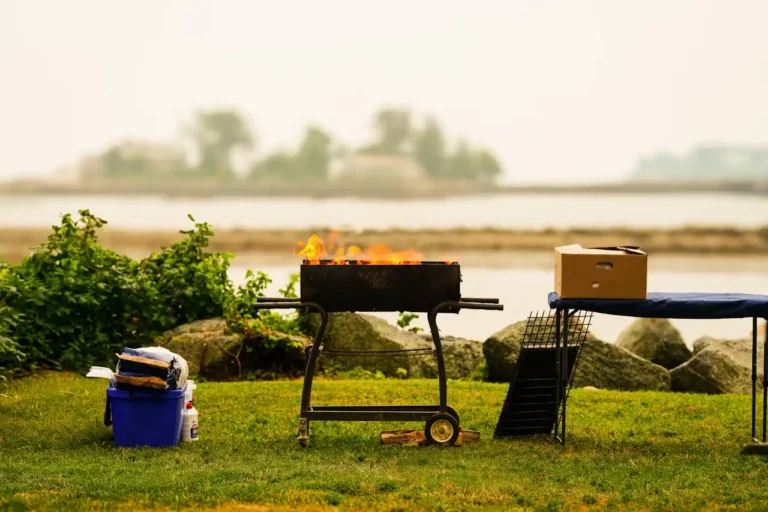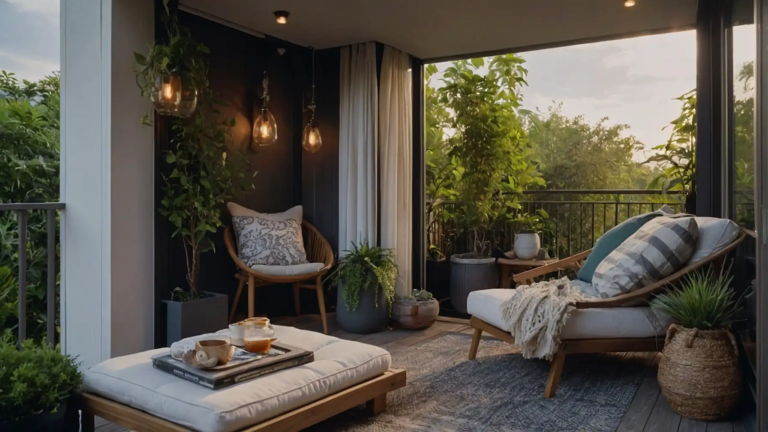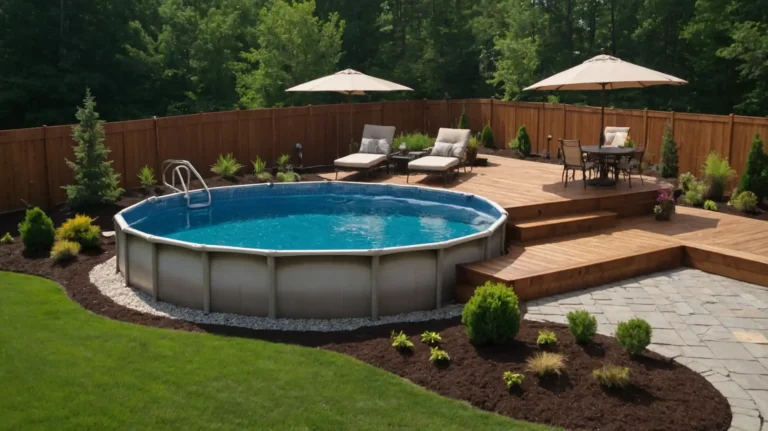The Secret to Keeping Outdoor Cushions Looking New
Your outdoor space deserves cushions that look as fresh as the day you bought them.
Yet sun, rain, and daily use quickly turn vibrant fabrics into faded, stained reminders of better days.
The good news? You can keep your outdoor cushions looking pristine with the right approach and consistent care.
Understanding Your Cushion Materials
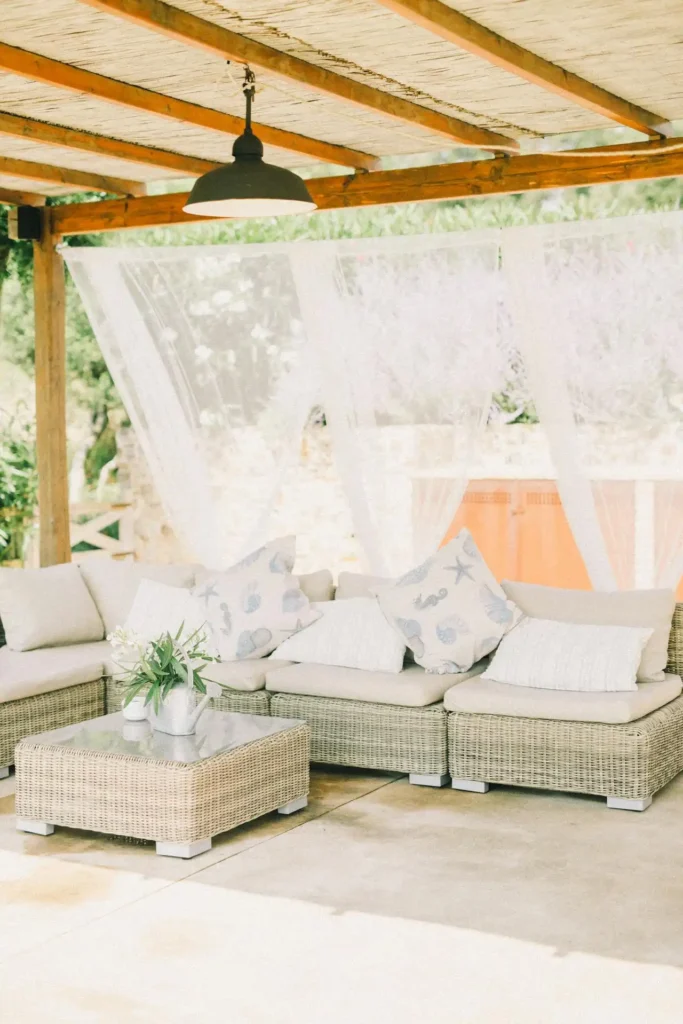
Before you dive into cleaning routines, you need to know what you’re working with.
Different outdoor cushion materials require different care strategies, and using the wrong approach can damage your investment.
Most outdoor cushions feature synthetic fabrics like polyester, acrylic, or olefin. These materials resist moisture and UV rays better than natural fibers.
You’ll often find brands like Sunbreak, which offers superior fade resistance and water repellency. Check your cushion tags or manufacturer information to identify the specific fabric type.
Natural materials like cotton or linen require extra protection since they absorb moisture and fade more quickly.
If you have these materials, you’ll need to be more vigilant about weather protection and cleaning frequency.
The cushion filling also matters significantly. Foam cores wrapped in protective barriers work best for outdoor use.
Quick-dry foam prevents mold and mildew growth, while standard foam retains moisture and creates problems. Polyester fiberfill dries faster than foam but may lose shape over time.
Regular Cleaning Routines
Consistency beats intensity when it comes to cushion maintenance. Start each week by removing loose debris with a vacuum cleaner or soft brush.
You’ll prevent major problems by establishing simple weekly and monthly cleaning habits that take just minutes to complete.
Pay attention to seams and crevices where dirt accumulates. This simple step prevents ground-in stains and extends the time between deep cleanings.
Monthly deep cleaning keeps your cushions fresh and vibrant. Remove cushion covers if possible and machine wash them in cold water with mild detergent.
Avoid bleach or fabric softeners, which can break down water-resistant coatings. Air dry the covers completely before putting them back on.
For non-removable covers, spot clean with a solution of mild soap and water. Consider using a fabric protector spray after cleaning.
Use a soft brush to work the solution into the fabric, then rinse thoroughly with clean water. Allow cushions to dry completely in a well-ventilated area.
These products create an invisible barrier that repels water and stains. Apply the spray evenly and allow it to dry completely before using the cushions.
Weather Protection Strategies
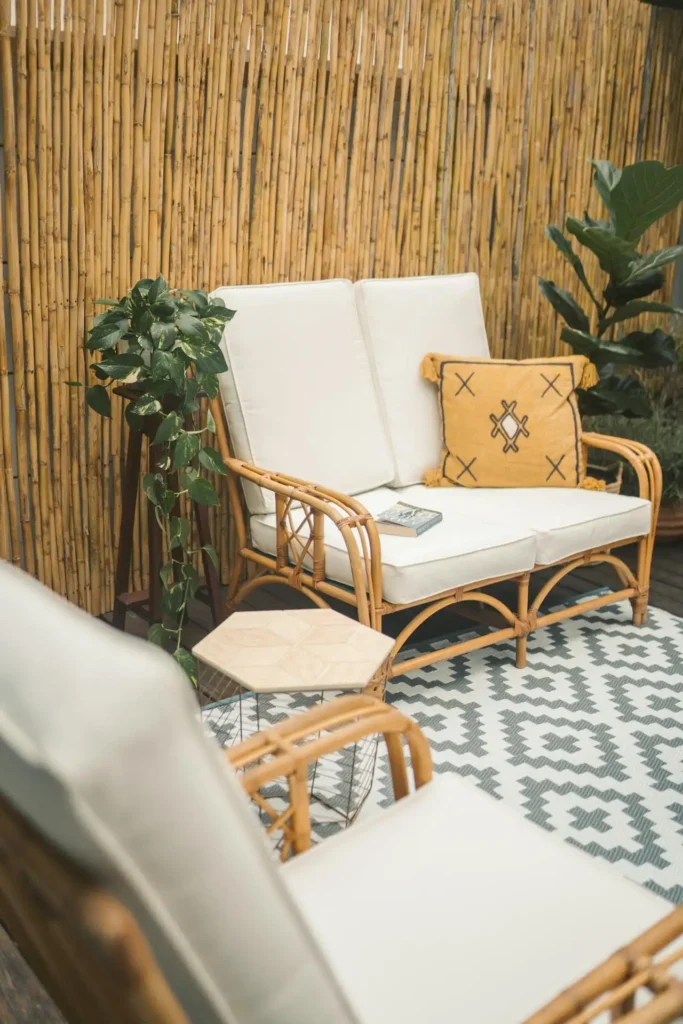
Sun damage ranks as the top enemy of outdoor cushions. UV rays break down fabric fibers and fade colors, even on supposedly fade-resistant materials.
You can significantly extend cushion life by implementing smart protection strategies. Position your furniture to minimize direct sun exposure during peak hours.
Morning sun causes less damage than intense afternoon rays. If you can’t avoid sun exposure, invest in a quality patio umbrella or shade sail.
Rotate your cushions regularly to ensure even wear and fading. Flip them weekly and move them to different positions monthly.
This practice prevents one side from bearing all the sun damage and helps maintain uniform appearance.
Rain protection requires immediate attention. Even water-resistant fabrics can develop problems if they stay wet for extended periods.
Remove cushions during heavy storms, or cover them with waterproof furniture covers. Wind can cause significant damage through constant friction and movement.
Secure lightweight cushions with ties or weights during windy conditions. This prevents them from blowing around and developing premature wear spots.
Storage Solutions
Proper storage during harsh weather and off-seasons dramatically extends cushion life.
You don’t need expensive storage solutions – just dry, ventilated spaces that protect from moisture and pests.
Clean cushions thoroughly before storage to prevent stains from setting and odors from developing.
Allow them to dry completely, as any residual moisture can lead to mold and mildew growth during storage.
Choose storage locations that maintain consistent temperatures and low humidity. Basements often seem ideal but can trap moisture.
Attics work well if they don’t get extremely hot. Climate-controlled spaces like spare rooms or closets offer the best protection.
Avoid plastic bags for long-term storage, as they trap moisture and create perfect conditions for mold growth. Instead, use breathable cotton storage bags or simply cover cushions with old sheets.
Store cushions flat when possible to maintain their shape. If you must stack them, place the largest cushions on the bottom and avoid compressing them too heavily.
Check on stored cushions periodically and air them out if you notice any musty odors.
Dealing with Stains and Damage
Quick action makes the difference between a minor cleanup and permanent damage. Different stains require different approaches, but speed always matters most.
For food and beverage spills, blot immediately with clean, dry cloths. Don’t rub, as this pushes the stain deeper into the fabric. After blotting, rinse the area with cold water and apply a mild cleaning solution.
Grease stains require special attention. Sprinkle cornstarch or baking soda on fresh grease to absorb it, then vacuum after 15 minutes.
Apply a small amount of dish soap directly to the stain and work it in gently before rinsing. Mold and mildew need immediate treatment to prevent spreading.
Mix one cup of white vinegar with one cup of water and spray the affected area. Let it sit for 30 minutes, then scrub gently with a soft brush. Rinse thoroughly and dry completely.
Bird droppings contain acids that can permanently stain fabric if left untreated.
Remove solid matter carefully, then treat the area with an enzyme cleaner specifically designed for organic stains. These cleaners break down proteins and eliminate odors.
Choosing the Right Fabrics
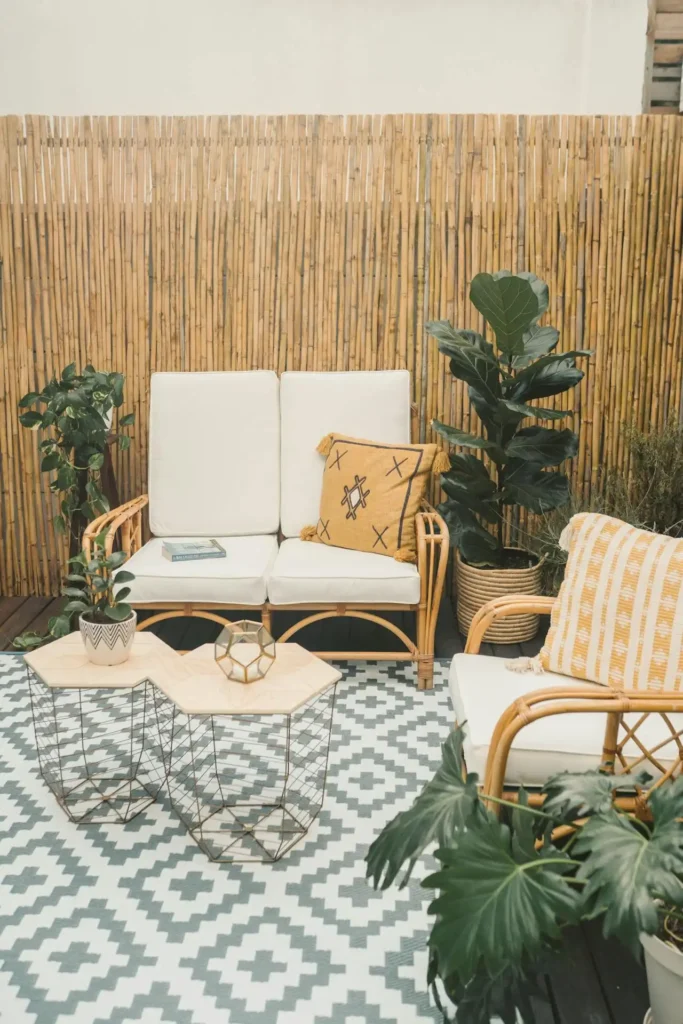
If you’re replacing cushions or buying new ones, fabric choice determines how much maintenance you’ll need.
Understanding fabric technologies helps you make informed decisions that match your lifestyle and climate.
Solution-dyed acrylic fabrics like Umbrellas offer the best combination of durability and appearance retention.
The color goes through the entire fiber, making fading nearly impossible. These fabrics also resist water, stains, and mildew naturally.
Polyester fabrics cost less but require more maintenance. They fade more quickly and may develop water spots.
However, high-quality polyester blends with protective coatings can perform nearly as well as premium acrylics.
Vinyl and plastic fabrics require minimal maintenance but may not provide the comfort and appearance you want.
They work well for areas with extreme weather exposure but can become uncomfortable in hot weather.
Consider fabric weight when making selections. Heavier fabrics generally last longer but take more time to dry. Lighter fabrics dry quickly but may not withstand heavy use as well.
Maintenance Schedule
Creating a maintenance schedule ensures you don’t forget important care tasks. Regular attention prevents small problems from becoming expensive replacements.
Weekly tasks take just a few minutes but make a huge difference. Brush off debris, check for new stains, and flip cushions to promote even wear.
Remove cushions during severe weather warnings. Apply fabric protector spray if needed and inspect cushions for developing problems.
Monthly deep cleaning keeps fabrics fresh and extends their life. Wash removable covers or spot clean non-removable ones.
Seasonal tasks prepare your cushions for changing weather conditions. Replace worn items before they make your entire outdoor space look shabby.
Deep clean before storing for winter, inspect for damage that needs repair, and apply fresh fabric protection for the coming season.
Annual assessments help you plan for replacements before cushions become completely worn out. Check fabric integrity, foam condition, and overall appearance.
Professional Care Options
Sometimes professional cleaning makes sense, especially for expensive cushions or stubborn stains.
Many upholstery cleaners offer outdoor fabric services and have specialized equipment and cleaning solutions.
Professional cleaning costs more than DIY maintenance but can restore severely damaged cushions.
Consider this option for valuable cushions with difficult stains or when you lack time for proper maintenance.
Some manufacturers offer cleaning and restoration services for their products.
These services understand the specific needs of their fabrics and can often achieve better results than general cleaners.
Mobile cleaning services bring equipment to your home, making the process more convenient. They can clean cushions on-site and often complete the work in a few hours.
Budget-Friendly Maintenance Tips
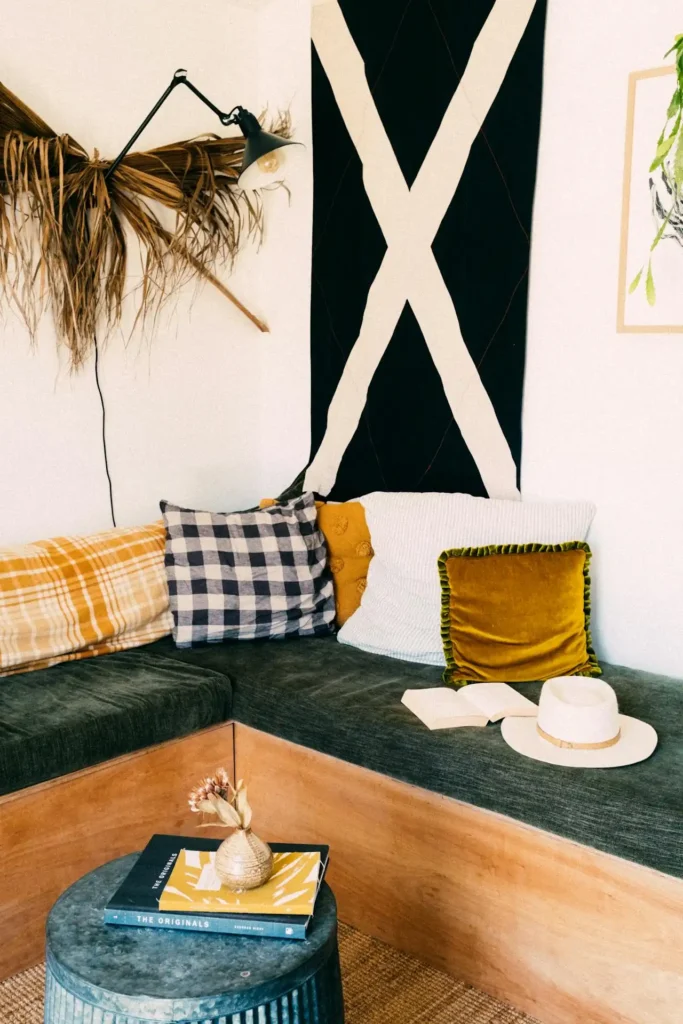
Effective cushion care doesn’t require expensive products or equipment. Many household items work just as well as specialized cleaners for routine maintenance.
White vinegar serves as an excellent natural cleaner and deodorizer. Mix it with water for general cleaning or use it full strength on mildew.
It costs pennies compared to commercial cleaners and works just as well.
Baking soda absorbs odors and can help lift stains when mixed with water to form a paste. Sprinkle it on damp cushions to absorb moisture and eliminate musty smells.
Dawn dish soap cuts through grease and grime effectively. Use just a small amount mixed with water for most cleaning tasks. Its gentle formula won’t damage outdoor fabrics.
Old toothbrushes work perfectly for scrubbing stains and cleaning seams. They provide just the right amount of agitation without damaging fabric fibers.
Conclusion
Your outdoor cushions will stay beautiful for years with consistent care and smart protection strategies.
Start implementing these practices today, and you’ll enjoy fresh-looking outdoor spaces for seasons to come.

